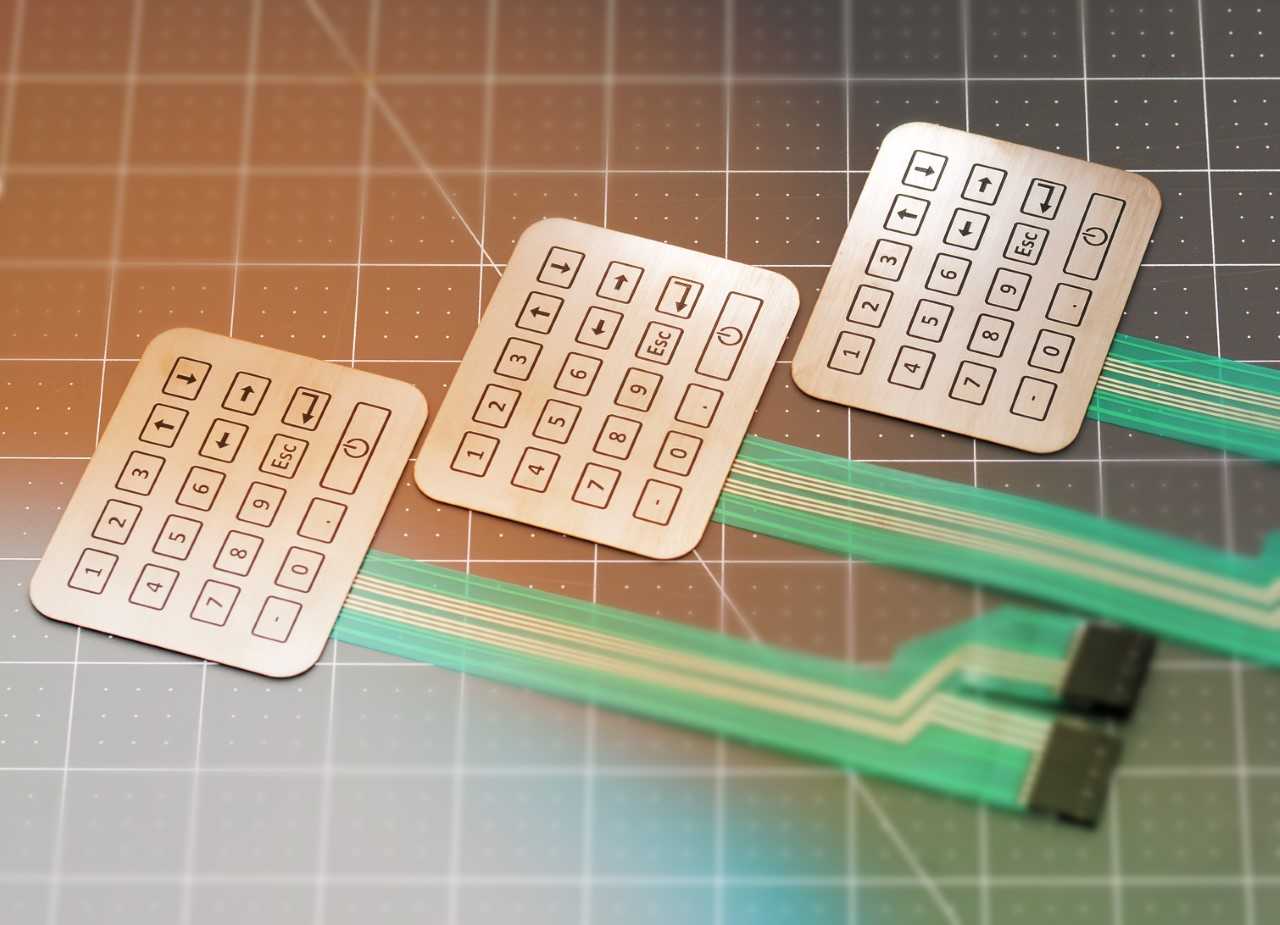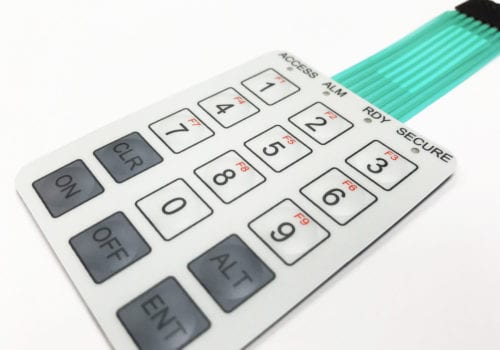All About Membrane Switch: Comprehending Its Design and Capability
When you think of the control user interfaces in contemporary gadgets, membrane layer buttons frequently enter your mind. These components are more than just buttons; they mix design and performance effortlessly. Comprehending exactly how they work and what makes them reliable can alter your viewpoint on daily electronics. However, there are nuances to their layout and efficiency that you might not recognize. Let's discover what sets membrane switches besides various other control systems.
What Are Membrane Layer Buttons?

Their smooth nature makes them easy to clean and resistant to dust and dampness, an essential function in many atmospheres. Membrane buttons can also be personalized pertaining to shape, size, and graphics, permitting makers to develop one-of-a-kind user interfaces customized to specific products. And also, they're lightweight and thin, which assists in reducing the overall mass of devices. Overall, membrane switches play a substantial function in improving customer experience throughout a large selection of applications.
How Membrane Switches Over Job
When you press a trick on a membrane switch, it turns on an uncomplicated yet efficient device. The leading layer, frequently constructed from versatile material, lowers onto a conductive layer below it. This activity bridges the void between conductive traces, finishing an electrical circuit. As quickly as the circuit closes, it sends out a signal to the device's controller, which interprets your input.
You'll see that the tactile feedback varies based on the button layout, using either a soft click or a much more obvious reaction. When you launch the secret, the membrane layer returns to its original setting, reopening the circuit and quiting the signal. This procedure occurs practically instantly, guaranteeing a receptive user experience.
Membrane buttons are preferred due to their longevity and resistance to dirt and moisture, making them ideal for different applications, from house devices to clinical devices. Understanding this operation assists you value their extensive usage.
Trick Components of Membrane Switches
Comprehending the key components of membrane layer switches is essential for grasping their functionality and style. The safety layer shields versus ecological factors and use, prolonging the switch's life expectancy. By recognizing these components, you'll gain understanding right into just how membrane switches operate and their importance in different applications.
Materials Made Use Of in Membrane Switch Over Style
The performance and sturdiness of membrane layer switches greatly depend on the products used in their style. You commonly experience polyester and polycarbonate as main substrates due to their excellent toughness and adaptability. These materials withstand scrapes and chemicals, making them ideal for demanding environments.
The conductive layers commonly use silver or carbon, chosen for their reliability and conductivity. membrane switch manufacturer. Silver gives superior performance, while carbon is a cost-effective alternative. For the overlay, you might take into consideration a matte or shiny surface, relying on your aesthetic demands and individual experience
Make particular to pick adhesives that stand up to ecological elements like temperature and humidity. Choosing the ideal materials will certainly ensure your membrane switch stands the test of time.
Design Considerations for Membrane Buttons
While making membrane layer switches, it's important to take right into account different aspects that influence their functionality and customer experience. Start by concentrating on the design and switch dimension; make certain they're instinctive and easy to browse.
Validate your style suits environmental elements, like dampness or temperature variants, which can influence efficiency. By very carefully considering these elements, you'll create a membrane Read Full Report layer switch that boosts functionality and complete satisfaction.
Applications of Membrane Buttons
Membrane switches are flexible components located in different applications, from commercial devices to customer electronic devices. You'll see their influence in machines that require long lasting interfaces and in gadgets that benefit from smooth styles. Recognizing these applications assists you value the functionality and usefulness of membrane switches in everyday innovation.
Industrial Devices Usage
When you're looking to enhance the performance of commercial tools, membrane layer switches supply a reputable remedy that combines longevity with easy to use style. These buttons are best for rough atmospheres, supplying resistance to dirt, dampness, and chemicals. Embrace membrane switches to streamline your operations and enhance general best site efficiency.
Consumer Electronics Assimilation
In the domain name of customer electronic devices, membrane layer buttons play a necessary function in improving individual communication and tool functionality. You'll find them in devices like microwaves, remote controls, and gaming consoles, giving a smooth means to interact with innovation. Their sleek design enables easy assimilation into numerous items, making controls intuitive and straightforward. With their capability to integrate graphics and backlighting, you can delight in a modern visual that enhances the tool's total appearance. Membrane layer buttons likewise assure longevity and resistance to dust and moisture, prolonging the life expectancy of your electronics. By picking membrane layer switches, you improve not simply the functionality but additionally the design of your devices, making everyday communications smooth and enjoyable.
Advantages and Negative Aspects of Membrane Buttons
While membrane switches use a variety of benefits, they likewise come with some downsides that you should take into consideration. One considerable benefit is their compact design, making them perfect for space-constrained applications.

However, there are drawbacks. Membrane buttons can have a much shorter life-span contrasted to mechanical buttons, specifically under hefty use. They can also be less tactile, which may affect user comments throughout procedure. If damaged, repairing them can be tough and usually needs total substitute. Inevitably, their level of sensitivity to severe temperature levels Check Out Your URL and ecological problems might restrict their effectiveness in specific settings. Stabilizing these pros and cons will aid you establish if membrane layer switches are the best fit for your task.
Frequently Asked Inquiries
For How Long Do Membrane Switches Over Generally Last?
Membrane layer changes typically last in between 5 to 10 years, relying on use and ecological conditions. You'll want to review aspects like wear, direct exposure to wetness, and temperature changes to determine their durability properly.
Can Membrane Changes Be Customized for Specific Styles?
Yes, you can customize membrane layer switches to fit certain styles (membrane switch manufacturer). You'll have the liberty to pick shades, shapes, and layouts that match your job's needs, ensuring they blend flawlessly with your general visual
What Is the Expense Array for Membrane Layer Change Manufacturing?
The cost variety for membrane layer button production usually drops in between $1 and $10 each, depending on aspects like layout intricacy, amount, and products. You can obtain quotes from manufacturers to locate the finest alternative.

Are Membrane Layer Changes Waterproof or Immune?
Membrane buttons can be created to be water-proof or immune, relying on materials used and building and construction approaches. If you require them for wet environments, assure you specify those demands during the style procedure.
Just How Do Membrane Layer Switches Over Contrast to Typical Switches?
Membrane buttons are typically thinner and more adaptable than typical buttons, supplying a smooth design. They're commonly much easier to clean up and integrate, but might not give the tactile feedback you're used to with mechanical choices.
Verdict
